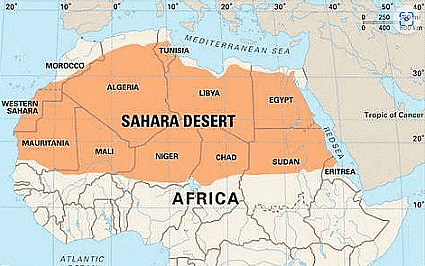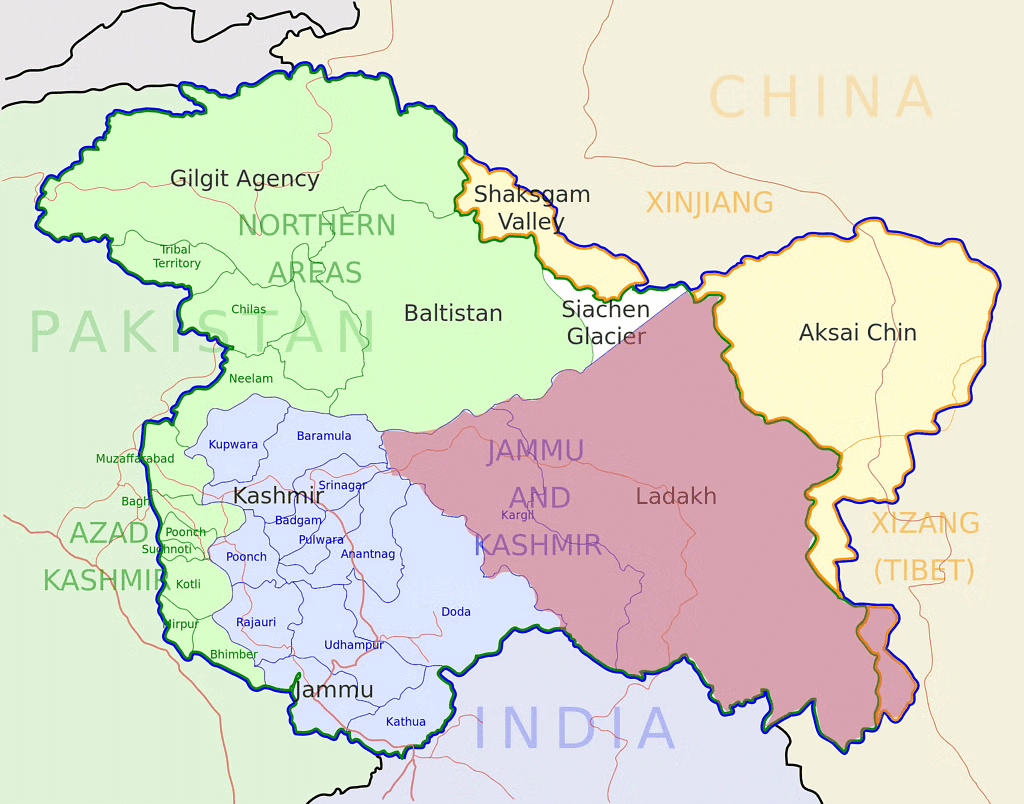UPSC Exam > UPSC Notes > Geography for UPSC CSE > NCERT Summary: Deserts
NCERT Summary: Deserts | Geography for UPSC CSE PDF Download
Introduction
Deserts are arid regions characterized by extremely low rainfall and sparse vegetation. They cover about one-third of the Earth's land surface. The main types include hot deserts, like the Sahara, and cold deserts, like Antarctica. Deserts host unique ecosystems with specially adapted flora and fauna. Understanding deserts is crucial for environmental studies and climate change discussions.

The Hot Desert - Sahara
- The Sahara is the largest desert globally, covering about 8.54 million sq. km.
- It stretches across eleven countries: Algeria, Chad, Egypt, Libya, Mali, Mauritania, Morocco, Niger, Sudan, Tunisia, and Western Sahara.
- In addition to sand, the Sahara has gravel plains and rocky plateaus, some rising over 2500m in elevation.

Climate
- The climate in the Sahara Desert is extremely hot and dry.
- It has a brief rainy season.
- Daytime temperatures can reach up to 50°C, causing the sand and rocks to heat up and radiate warmth.
- Nights can be very chilly, with temperatures nearing 0°C.
Flora and Fauna
- Vegetation in the Sahara includes cactus, date palms, and acacia trees.
- Oases, which are green areas with date palms, are also found in the desert.
- Common animals in the Sahara include camels, hyenas, jackals, foxes, scorpions, and various types of snakes and lizards.
People
- Various groups, such as the Bedouins and Tuaregs, inhabit the Sahara.
- These groups raise livestock including goats, sheep, camels, and horses.
- Settled populations in oases and the Nile Valley cultivate date palms and crops like rice, wheat, barley, and beans.
- Egyptian cotton is also a significant crop in this region.
- The discovery of oil in countries like Algeria, Libya, and Egypt is transforming the Sahara.
- Modern developments include the construction of glass buildings and superhighways, replacing traditional routes.
- The Tuaregs have shifted from traditional lifestyles to guiding tourists, while many nomads now work in the oil and gas industries.
The Cold Desert - Ladakh

Location: Ladakh is a cold desert in the Great Himalayas, situated on the eastern side of Jammu and Kashmir. It is bordered by the Karakoram Range to the north and the Zanskar mountains to the south. The Indus River, along with several glaciers like the Gangri glacier, is significant to this region.
- Altitude: The altitude in Ladakh varies from about 3000 meters in Kargil to over 8000 meters in the Karakoram Range.
- Climate: The climate is very cold and dry due to its high altitude. Summer daytime temperatures are slightly above 0°C, while nighttime temperatures can drop below -30°C. Rainfall is scarce, averaging around 10 cm annually, a result of the rain shadow effect caused by the Himalayas. The region is also characterized by freezing winds and intense sunlight.
- Vegetation: Vegetation is limited due to the arid conditions, with only sparse patches of grasses and shrubs. In summer, fruit trees such as apples, apricots, and walnuts can be found.
- Wildlife: Common birds in Ladakh include robins, redstarts, Tibetan snowcocks, ravens, and hoopoes. Wildlife includes wild goats, wild sheep, yaks, and special breeds of dogs, which are raised for their milk, meat, and hides.
People and Culture
- Agriculture: In the summer months, locals engage in the cultivation of barley, potatoes, peas, beans, and turnips.
- Winter Activities: During the harsh winters, the community participates in various festivities and ceremonies. Women play a crucial role in managing households, agricultural activities, and small-scale businesses.
- Connectivity: Leh, the capital of Ladakh, is well-connected by road and air. National Highway 1A links Leh to the Kashmir Valley through the Zojila Pass.
- Tourism: The region attracts a significant number of tourists, both from India and abroad, contributing to the local economy.
The document NCERT Summary: Deserts | Geography for UPSC CSE is a part of the UPSC Course Geography for UPSC CSE.
All you need of UPSC at this link: UPSC
|
269 videos|870 docs|231 tests
|
FAQs on NCERT Summary: Deserts - Geography for UPSC CSE
| 1. What are the main characteristics of the Sahara Desert? |  |
Ans. The Sahara Desert is the largest hot desert in the world, covering approximately 9.2 million square kilometers. It is characterized by extreme temperatures, with daytime temperatures often exceeding 50°C (122°F) and nighttime temperatures dropping significantly. The Sahara has diverse landscapes, including sand dunes, rocky plateaus, and gravel plains. It receives very little rainfall, averaging about 3 inches per year, which contributes to its arid climate.
| 2. How does the climate of Ladakh differ from that of the Sahara Desert? |  |
Ans. Ladakh is classified as a cold desert, characterized by its high altitude and mountainous terrain. Unlike the Sahara, which experiences extreme heat, Ladakh has cold winters with temperatures dropping well below freezing, while summers are mild. Ladakh receives more precipitation than the Sahara, primarily in the form of snowfall during winter. The climate is influenced by the surrounding Himalayas, which block moisture-laden winds.
| 3. What types of vegetation are found in the Sahara Desert? |  |
Ans. Despite its harsh conditions, the Sahara Desert supports a variety of vegetation adapted to arid environments. Common plants include cacti, acacia trees, and various drought-resistant shrubs. These plants have developed adaptations such as deep roots, thick skins, and the ability to store water, allowing them to survive in the extreme conditions of the desert.
| 4. What adaptations do animals in the Sahara Desert have for survival? |  |
Ans. Animals in the Sahara Desert have evolved several adaptations to survive the extreme conditions. For example, the fennec fox has large ears that help dissipate heat, and its nocturnal lifestyle allows it to avoid the daytime heat. Many desert animals are also able to conserve water, either by obtaining it from their food or through specialized kidneys that minimize water loss.
| 5. What are some economic activities practiced in Ladakh despite its desert climate? |  |
Ans. In Ladakh, despite the cold desert climate, several economic activities thrive. Agriculture is practiced in the form of terrace farming, where barley, wheat, and mustard are cultivated. Animal husbandry is also significant, with sheep, yak, and goats being raised for their wool and milk. Additionally, tourism has become a vital part of the local economy, attracting visitors to its unique landscapes and cultural heritage.
Related Searches





















